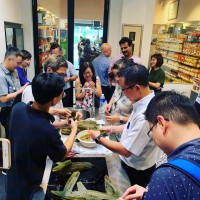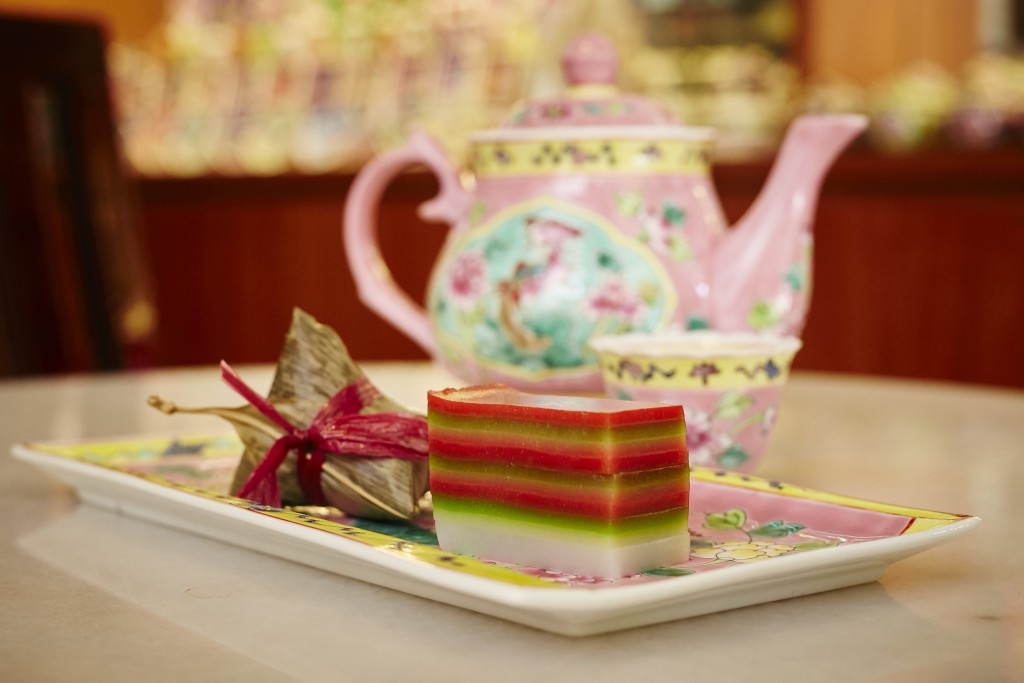
A common question that our food tour guides field every day is from tourists asking us about the Peranakans. What does the word mean? Who are these mysterious people?
Well there’s nowhere better in Singapore than Kim Choo to answer this question.
Kim Choo Kueh Chang dates back to 1940’s Singapore. It was then that Madam Lee Kim Choo began to sell sticky rice dumplings under a tree in nearby Joo Chiat. Her recipe was a hit with the locals and soon she had garnered a regular following. Her family decided to back her and they were able to raise enough money to buy a restaurant.
Fast forward to today. Kim Choo Kueh Chang is the number one name in Singapore for that very same, sticky rice dumpling recipe. The restaurant is now a very successful catering arm. Where the restaurant once was is now a Peranakan visitors centre. There is always a queue outside. People eager to buy their Peranakan kuehs and take home the famous dumplings.
When we stop here on our Katong food tours it’s a great spot to introduce our guests into the Peranakan culture. So we do.
So who are the Peranakans?
The word Peranakan means descendent. It refers to locals who are descended from Chinese traders who began setting up in Singapore in the 15th century. The traders married local ladies. Soon their children were learning and respecting both parents cultures, languages, food and religious beliefs.
Our tour guide Tony who is himself a Peranakan says. “It’s like taking the good stuff from one culture and mixing it with the good stuff of another culture.”
The Peranakans were able to communicate in various dialects. When the British arrived in Singapore they used the Peranakans as their middle men for business. Pretty soon the Peranakans were making good money. They were able to move out of the crowded Chinatown and inner city areas. Soon Katong became the Peranakan enclave of Singapore. It has remained so even today. Peranakan restaurants such as Old Bibiks and Baba Chews are amongst local eateries here.
The Peranakans liked to display their wealth. They would often paint and decorate the outside of their houses. Katong is full of these colourful shophouses. It makes for a great back drop during the food tours.

We always try a few different things when we visit Kim Choo on the food tours. Of course the rice dumplings are a must. They are actually a must eat food of Singapore. Other bites that our guests enjoy are the sugar bombs called Ondeh Ondeh. These are coconut covered mini sweets. Inside the tapioca flour ball is a sticky glob of palm sugar. This explodes when you eat it. Definitely one for the sweet tooth lovers. Another popular Peranakan bite is the Kueh lapis or layer cake. There’s a specific way that the locals eat this cake. We’ll tell you how to on our food tour.
If you’re in Katong you should not miss a visit to Kim Choo. Alternatively, book the best food tour in Singapore by going to www.singabites.com
